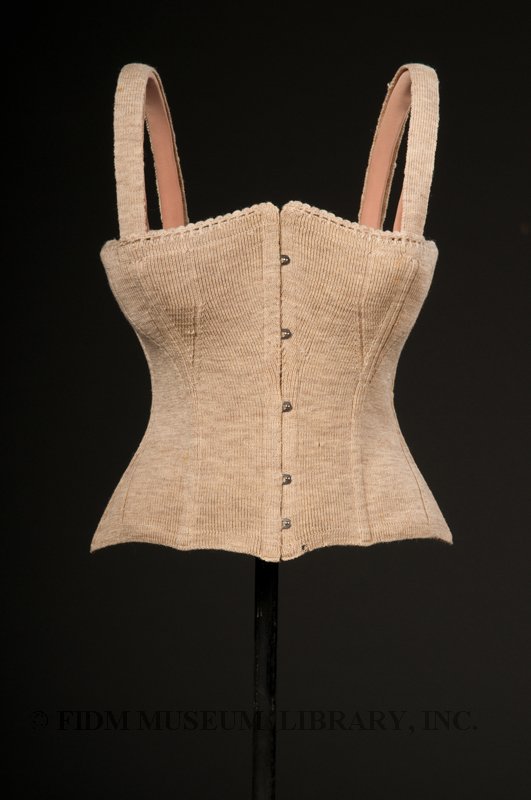 Corset
Corset
1890s
Gustav Jaeger, Designer
Wool & metal
Museum Purchase
2009.5.1
German physician Gustav Jaeger (1832-1917) advocated wearing wool undergarments next to the skin for health purposes in his book Sanitary Woolen System, first published in 1878. Flannel and jersey underwear made of undyed sheep's wool was believed to conserve vital energy, prevent microorganisms from penetrating the skin, and wick perspiration away from the body. Jaeger considered linen and cotton undesirable because they retained dampness, causing illness. The doctor discouraged dyes, because he believed they contained harmful chemicals that were absorbed by the bloodstream.
Dr. Jaeger's company made and marketed union suits, under-vests, corset, and socks; they were available to purchase directly from his depots in London and New York City, as well as through authorized mail-order catalogs. This rare, heather-gray wool Jaeger corset is a remarkable contrast to fashionable examples of the same period, made from rigid, steam-molded cotton coutille or dyed silk. The lightly boned knit stretched easily over the torso, making it a healthier and more comfortable alternative to tight-lacing.
The Jaeger corset was part of a larger movement towards dress reform. Beginning in the mid-nineteenth century, many in the UK and US began to decry the supposed health hazards of women's dress. For those interested in dress reform, layers of petticoats and constricting corsets were considered cumbersome, unhealthful, and even dangerous. New ideas about dress took many forms, including Artistic dress, which was based on the relatively loose-fitting, draped garments of antiquity. Unlike Artistic dress, which was often discussed in terms of aesthetic appeal, Dr. Jaeger's woolen corsets were designed with health first and foremost in the doctor's mind.
To learn more about the beliefs that led Dr. Jaeger's system of sanitary woolen undergarments, browse this 1886 edition of his essays.

